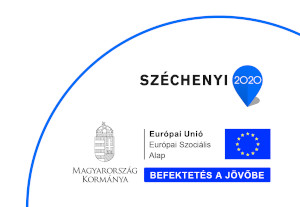Patronal festival
09-29
General characteristics
This is an originally medieval church that is now in the Historicist and Romanesque Revival styles located at the highest point of the Castle Hill at the northern end of Vár Street as it becomes a square. It is free standing and oriented slightly to the northeast with a pair of towers on the western end. It begins as a three-aisled nave, but expands to five aisles in the two easternmost bays of the nave. The church is extended beyond the side apses by sacristies of the same height, and it has an...Read more
This is an originally medieval church that is now in the Historicist and Romanesque Revival styles located at the highest point of the Castle Hill at the northern end of Vár Street as it becomes a square. It is free standing and oriented slightly to the northeast with a pair of towers on the western end. It begins as a three-aisled nave, but expands to five aisles in the two easternmost bays of the nave. The church is extended beyond the side apses by sacristies of the same height, and it has an elongated polygonal main apse with buttresses above the crypt. The ground level in front of the western section of the northern wall has been lowered to approximately the medieval level, and there are metal stairs (1976) leading down to the external entrance of the Chapel of St. George and the crypt. The main entrance is the western grand portal. The southern entrance is for everyday use, while its northern counterpart is not in use. An exposed external stairway leads to the exterior entrance of the southern sacristy. There are semicircular arched and circular windows along the nave, a Neo-Gothic rose window on the western façade, reconstructed tracery in the Gothic openings of the main apse, and the authentic forms of the rectangular windows on the eastern axis of the crypt have been uncovered. The smooth plastering on the façades has a uniform color, along with carved stone divisions, portals with splayed jambs, and Romanesque Revival and Neo-Gothic carvings. The side walls of the two aisles display continuous sections of the medieval wall fabric that have been supplemented for interpretation. The nave is arranged as a basilica. The high clerestory wall of the main nave rising over the side aisles is pierced by windows and supported by columns covered with artificial marble decoration. The main nave is covered with a flat wooden ceiling, while the side aisles have shed roofs with an exposed wooden structure. The transepts have galleries and look down on the main nave through arcaded openings. From the main nave, there are two wide flights of stairs leading up to the raised chancel and two narrow ones leading down to the crypt, the southern of which shows part of the exposed Romanesque wall. The Gothic ribbed vault of the main apse springs from brackets with tracery, while the vault of the crypt springs from Gothic pillars and simpler brackets. There are white marble altars (1910) on both levels of the main apse. The Baroque tomb with colored stucco ornaments of the bishop Márton Padányi Biró is located in the lower level of the southern sacristy. The floor covering, the ornamental and the figural painting, and the majority of the furnishings date back to 1910, while the side altars are artifacts from the 18th and 19th centuries. There is colorful ornamental and figural stained glass in the windows. Read less

